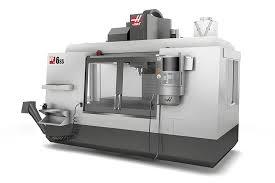Common CNC Machining Defects and How to Avoid Them

CNC machining has revolutionized modern manufacturing by enabling the precise, repeatable, and rapid production of complex components. However, like any industrial process, it isn’t without its flaws. Despite automation and tight tolerances, even the most advanced CNC operations can encounter machining defects that compromise the final product’s quality, performance, or appearance.
In this article, we’ll explore the most common CNC machining defects, what causes them, and how to avoid costly mistakes before they impact your production schedule.
🔧 1. Burr Formation
❗ What Is It?
A burr is a raised edge or small piece of excess material left on a workpiece after machining. It typically occurs around the edges or corners of a machined part.
🧾 Causes:
-
Dull cutting tools
-
High feed rates or cutting speeds
-
Inadequate tool path strategies
✅ How to Avoid It:
-
Use sharp tools and inspect them regularly
-
Implement deburring operations as a secondary step
-
Choose appropriate speeds and feeds based on the material
-
Utilize optimized toolpaths to reduce edge stress
⚠️ 2. Tool Marks and Surface Roughness Issues
❗ What Is It?
Visible tool paths or unwanted surface textures can reduce a part’s aesthetic appeal and functional performance—especially in applications requiring smooth finishes.
🧾 Causes:
-
Incorrect spindle speeds or feed rates
-
Vibration during cutting
-
Inappropriate tool selection
✅ How to Avoid It:
-
Adjust spindle speed and feed rate to match material properties
-
Use finishing passes with lower feed rates
-
Opt for high-quality, coated cutting tools
-
Ensure machine setup minimizes vibration and tool deflection
🔍 3. Dimensional Inaccuracy
❗ What Is It?
Parts that do not meet dimensional tolerances can lead to assembly problems, mechanical failures, or rejection of entire batches.
🧾 Causes:
-
Thermal expansion of workpiece or tool
-
Improper calibration of machine axes
-
Inaccurate CAD/CAM programming
-
Tool wear or deflection
✅ How to Avoid It:
-
Regularly calibrate and maintain CNC equipment
-
Use coolants to minimize heat build-up
-
Account for tool wear in the machining program
-
Perform quality inspections during production, not just post-process
⚙️ 4. Chatter Marks
❗ What Is It?
Chatter marks are wave-like surface defects caused by vibration between the cutting tool and workpiece. They are not just cosmetic—they indicate an unstable machining process.
🧾 Causes:
-
Loose tool holders
-
Poor machine rigidity
-
Incorrect tool geometry
-
Aggressive machining parameters
✅ How to Avoid It:
-
Use rigid fixtures and secure tool holding
-
Reduce depth of cut or feed rate
-
Opt for tools with anti-vibration features
-
Tune machine parameters for smoother operation
📉 5. Incorrect Hole Placement or Size
❗ What Is It?
Misaligned or wrongly sized holes can lead to poor fitment in assemblies and render a part unusable.
🧾 Causes:
-
Tool deflection during drilling
-
Errors in CAD/CAM programming
-
Worn drill bits
-
Machine backlash or misalignment
✅ How to Avoid It:
-
Use spot drilling to guide drill bits
-
Verify CAD files and G-code thoroughly
-
Maintain sharp, high-quality tools
-
Use precision drilling cycles for tighter tolerances
❌ 6. Warping or Deformation
❗ What Is It?
Some parts—especially thin-walled or large flat components—may warp during or after machining due to internal stresses.
🧾 Causes:
-
Residual material stress
-
Uneven material removal
-
Improper clamping or fixturing
-
Excessive heat from cutting
✅ How to Avoid It:
-
Use symmetric cutting strategies
-
Apply even clamping pressure
-
Use stress-relieved materials when possible
-
Control cutting temperature with coolants or air blast
🛠️ 7. Tool Breakage
❗ What Is It?
Broken tools can delay production, damage parts, and increase costs—especially if not detected early in automated runs.
🧾 Causes:
-
Incorrect feed/speed settings
-
Low-quality tooling
-
Inadequate tool maintenance
-
Overly aggressive cutting
✅ How to Avoid It:
-
Monitor tool wear with sensors or inspections
-
Program tool life limits into CNC machines
-
Use high-quality, application-specific tools
-
Reduce cutting depth and optimize approach paths
✅ Partnering With the Right CNC Machining Service Matters
Even the best-designed parts and programs can fail without a skilled CNC team monitoring the entire process. From toolpath optimization to part inspection, every step must be precise and quality-controlled.
That’s why partnering with a professional CNC machining service is essential. A trusted provider ensures you receive defect-free parts that meet your tolerance and performance requirements.
👉 Learn more about reliable, high-precision CNC machining service trusted by industries worldwide.
🧩 Final Thoughts
CNC machining defects may be common, but they’re not inevitable. With the right setup, tools, parameters, and process controls, most issues can be identified early—or avoided entirely.
Key takeaways:
-
Keep tools sharp and machines calibrated
-
Inspect during production, not just after
-
Partner with machining experts who understand material behavior and precision engineering
When you approach CNC machining proactively, you not only improve part quality but also reduce waste, rework, and costs—ensuring your projects are delivered on time and on spec.
- Art
- Causes
- Crafts
- Dance
- Drinks
- Film
- Fitness
- Food
- Games
- Gardening
- Health
- Home
- Literature
- Music
- Networking
- Other
- Party
- Religion
- Shopping
- Sports
- Theater
- Wellness


